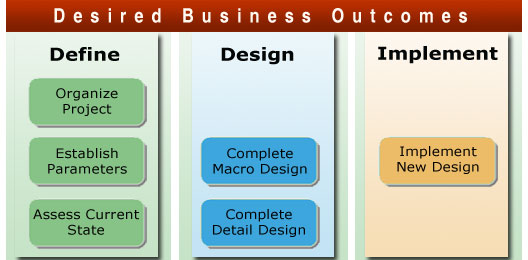Today’s business leader is faced with more challenges then ever from competitors. In these hard economic times is your organization straggling to reach its business initiatives? Can you move quickly to capture the next opportunity? Do you have the right infrastructure required to achieve these advantages? Can you leverage the right people and technology to do the best job and respond to the current shifting business conditions? Simply put, is your organization providing optimum results to develop the necessary capabilities to be competitive and deliver enduring business transformation.
TBI’s Business Transformation model uses years of experiences, leadership, and management solutions to help you meet your business objectives. Using an effective architecture of support, we select the essential skills needed to manage the process, a flexible business strategy and significant technical design through the combination of the right people, technology and processes to achieve your desired business outcome.
Its main components help your company:
- Change impact – by improving services to customers
- Change focus – by review and reappraisal of what your business should be doing to remain cost effective and competitive
- Change form – by improving the way your business works, and helping you build new organizational structures, skills, processes and deployment of technology
It is organized in the following manner:
- Define – Organize the project, establish project governance, establish design parameters, review strategic direction, assess your current state, develop organizational design, establish design principles and metrics, and complete a management review.
- Design – Complete internal/external benchmark of related organizational structure; identify and evaluate alternative designs, develop the business case for change, identify organizational and technology impacts; update risk, human capital, stakeholders and communication plans and build an impact analysis of the proposed plan.
- Implement – Introduce change management techniques to help support the redesign internally, start building the Project Management office to oversee the final results, select your internal leaders and support staff, identify knowledge transfer to address competency goals, implement methods of coordination, complete pilot test of design to ensure desired functionality, capture lessons learned, build a continuous improvement model for internal use, and implement the final phases of the action plan.


